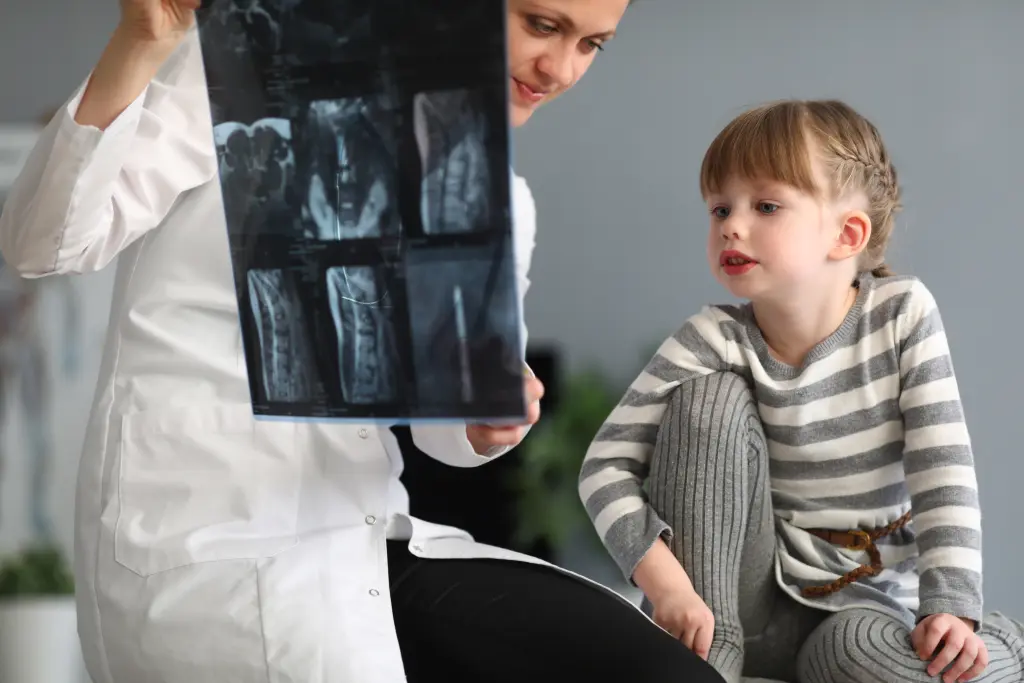WHAT IS PEDIATRIC SCOLIOSIS?
Scoliosis is an abnormality of the spine, which presents with a side-to-side curve. An individual with scoliosis has a spine with an S or C shape and can cause a difference in shoulder or hip height. This asymmetry may look as if the body is leaning to one side, and the head is not centered to the rest of the body.
HOW DO YOU DIAGNOSE SCOLIOSIS?
Finding scoliosis early is important for treatment. With a complete health history, and a physical exam, Dr. Mary can diagnose scoliosis along with additional test such as x-rays to measure the curves present in the spine. A curve that is 10 degrees or more is considered scoliosis. If your child is diagnosed with scoliosis, frequent checks are needed to check on the curve of his or her spine. Whether the curve gets worse depends on the amount of skeletal growth, or how skeletally mature your child is. Curving of the spine often slows down or stops after a child reaches puberty.
If left untreated, scoliosis can cause nervous system problems along with heart and lung function. Untreated scoliosis will have a negative impact in overall posture, and spinal health.
WHAT ARE TREATMENT OPTIONS?
In our office, treatment will depend on age, symptoms, and how mild, moderate, or severe the condition is.
The goal of treatment is to stop the curve from getting worse and prevent deformity and degeneration. When treated early, many have benefited from reversal in curvature and improvement in overall posture, and spinal preservation. Treatment may help minimize the need for bracing and surgery options. Therapy may include observation and repeated adjustments and exams. Frequency of adjustments will be determined on how a patient responds and holds after a series of visits.
What are the next steps?
Early detection and treatment are vital to improving the chances of optimal reversal of scoliotic curves. Call for an examination today!


